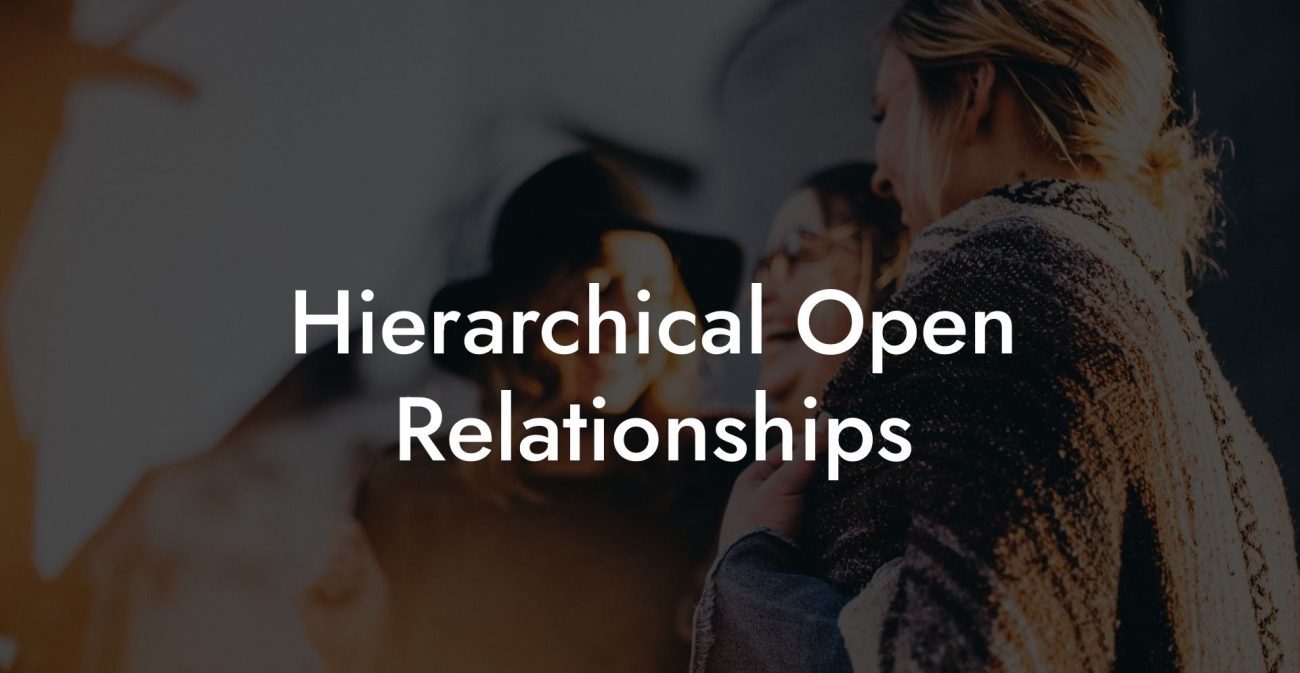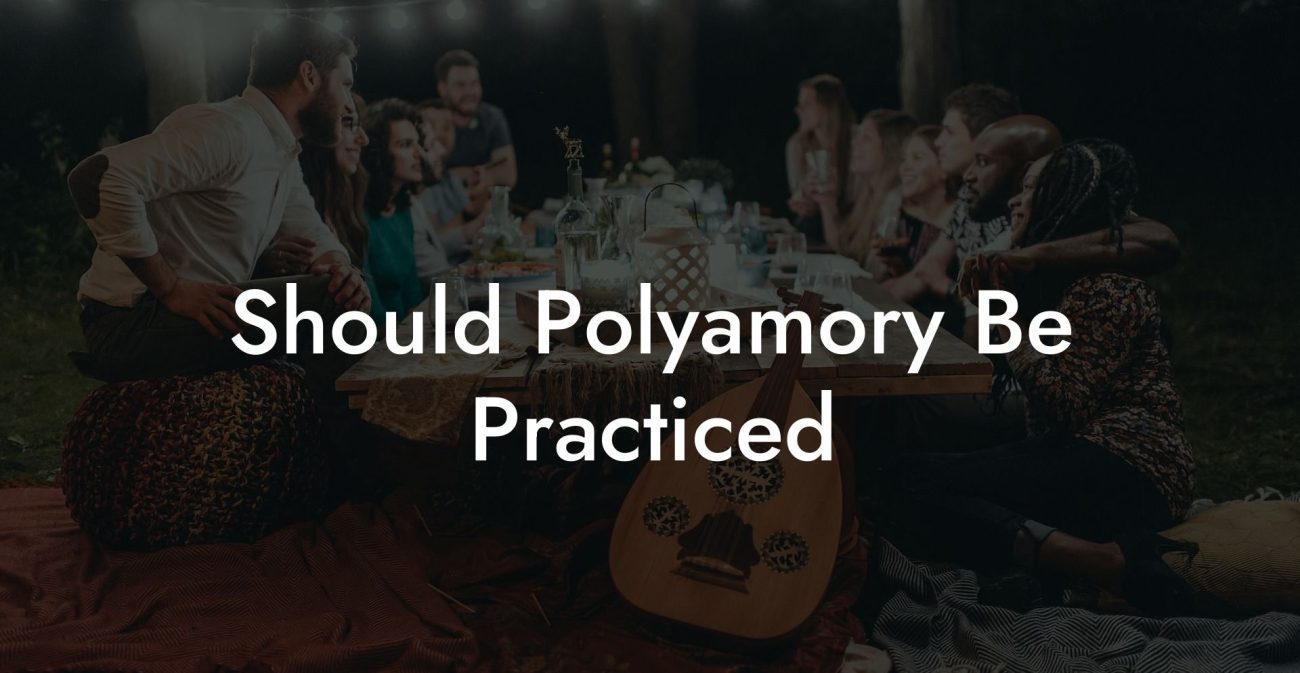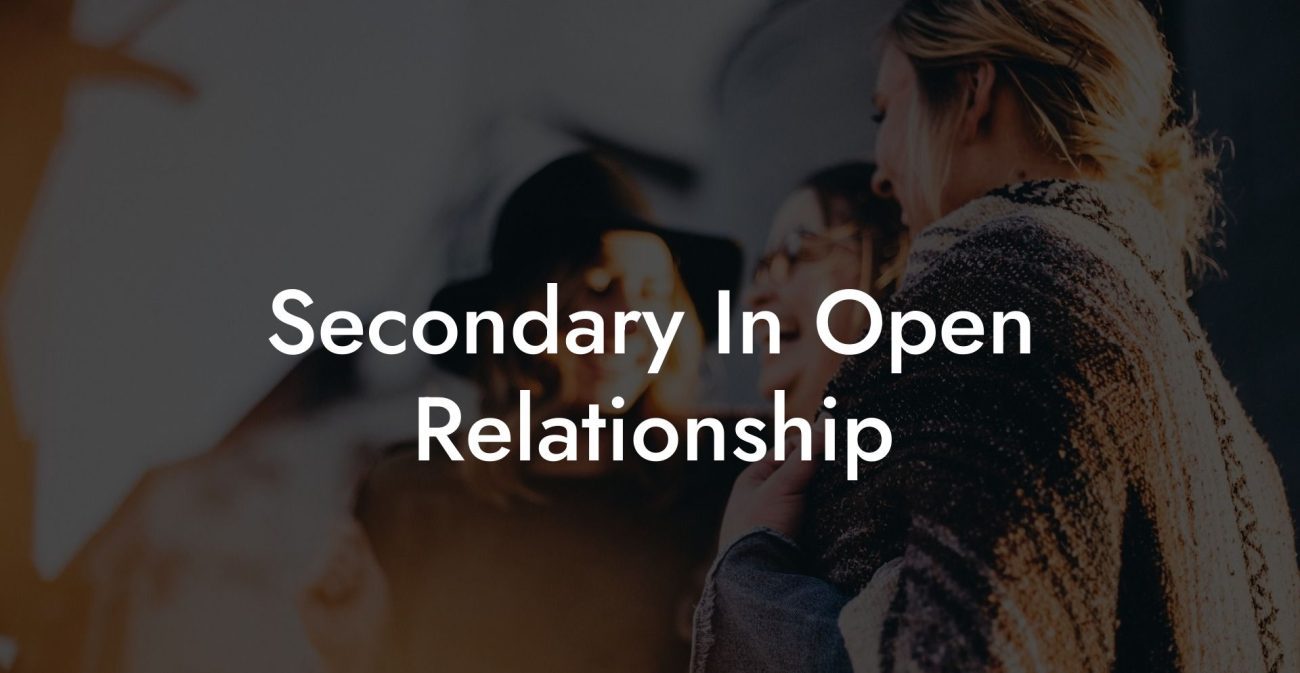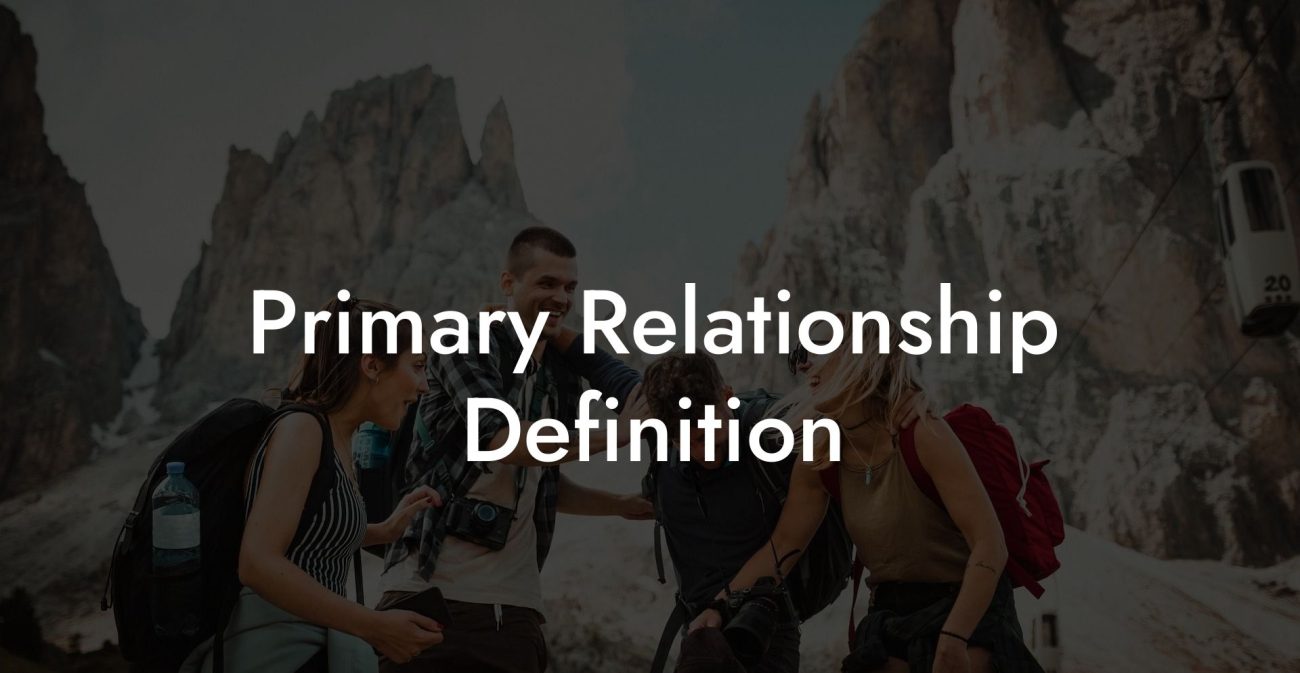Primary Partner

Imagine having a VIP pass to the most exclusive club of your heart, a space reserved for the partner who stands at the very center of your emotional universe. Welcome to the world of Primary Partners, where one connection isn’t just another romance, but the cornerstone of your intimate life. In this guide, we’ll explore what it means to have a primary partner in the context of both traditional and non-traditional relationships. We’ll dive into definitions, roles, benefits, challenges, and practical strategies for nurturing this unique bond. Whether you’re new to polyamory or committed to a monogamous ideal, this journey will help you understand how a primary partner can serve as your emotional anchor while still leaving room for growth and connection in other areas of life.
Quick Links to Useful Sections
- What Is a Primary Partner?
- Defining the Primary Partner Concept
- The Role and Significance of a Primary Partner
- Emotional Anchor and Stability
- Distinct Roles in a Multi-Partner Setup
- Historical and Cultural Perspectives
- The Evolution of Primary Partnership
- Cultural Narratives and Shifting Norms
- Benefits of Having a Primary Partner
- Deep Emotional Connection
- Clearer Communication and Boundaries
- Enhanced Stability and Security
- Opportunities for Personal Growth
- Challenges of the Primary Partner Role
- Potential for Emotional Dependency
- Balancing Multiple Relationships
- Navigating Shifting Dynamics
- Strategies for Nurturing a Healthy Primary Partnership
- Prioritize Open, Honest Communication
- Establish Clear Boundaries and Roles
- Invest in Quality Time Together
- Maintain Your Individual Identity
- Use Digital Tools for Organization
- Seek Professional Guidance When Needed
- Real-Life Success Stories
- Case Study: Sam and Jordan’s Enduring Connection
- Case Study: Alex’s Balancing Act in a Non-Monogamous World
- Expert Insights on Primary Partnerships
- FAQ: Your Primary Partner Questions Answered
What Is a Primary Partner?
Defining the Primary Partner Concept
A primary partner is typically the person with whom you share the deepest level of commitment, intimacy, and shared responsibilities. In many non-monogamous relationship structures, the primary partner is distinguished from secondary or tertiary connections by the level of emotional investment, time, and life integration. While the exact definition can vary from couple to couple, the primary partner is generally seen as the partner who is central to your long-term plans, who shares significant life goals, and who provides a stable foundation for your overall relationship network.
In traditional monogamous relationships, the concept of a primary partner is inherent, after all, your only partner is by definition primary. However, in polyamorous or open relationships, clearly defining a primary partner can help all parties understand where the deepest levels of commitment and responsibility lie. This clarity not only minimizes misunderstandings but also creates a framework for balancing multiple connections.
The Role and Significance of a Primary Partner
Emotional Anchor and Stability
The primary partner often serves as your emotional anchor, the person you rely on for support, security, and deep intimacy. This connection is characterized by consistent communication, shared routines, and a long-term vision for the future. Whether it’s navigating life’s challenges or celebrating its triumphs, the primary partner is the one who is there through thick and thin.
In many cases, the primary bond involves practical aspects such as cohabitation, joint financial responsibilities, or even parenting. This level of integration underscores the importance of trust and mutual respect in the relationship.
Distinct Roles in a Multi-Partner Setup
In non-monogamous relationships, distinguishing between primary and secondary partners can help create clarity and balance. While secondary relationships may offer excitement, variety, or different kinds of support, the primary partnership is often where the deepest emotional connection is forged. It is the foundation on which additional relationships are built.
The primary partner may also be the person with whom you share a greater degree of decision-making power, whether that’s about long-term goals, family planning, or managing shared responsibilities.
Historical and Cultural Perspectives
The Evolution of Primary Partnership
Throughout history, the idea of a central, exclusive bond has been celebrated in various cultures. In many traditional societies, monogamous relationships were the norm, with the primary partner being the only partner available. With the rise of non-monogamous relationship models in recent decades, the concept of a primary partner has been adapted to fit more complex relational networks.
Today, as people explore ethical non-monogamy, the primary partner role is redefined not as a limitation but as a conscious choice, a way to honor the most profound connection while still leaving room for other meaningful relationships.
Cultural Narratives and Shifting Norms
Cultural expectations have long dictated that the “one true love” is the pinnacle of romantic fulfillment. Whether celebrated in literature, movies, or family traditions, the idea of an exclusive, all-consuming bond has a powerful appeal. However, in the modern landscape, many people find that while the ideal of exclusive love remains compelling, it can be enriched by the recognition that not all relationships need to occupy the same space.
In this context, the primary partner is not seen as the sole repository of love but as the anchor around which other relationships may revolve, each adding its own flavor to the overall mosaic of your life.
Benefits of Having a Primary Partner
Deep Emotional Connection
One of the primary benefits of having a designated primary partner is the potential for profound emotional intimacy. When you invest heavily in one connection, you create the conditions for trust, vulnerability, and mutual support. This depth of connection can provide stability and comfort during challenging times.
Clearer Communication and Boundaries
Clearly defining your primary relationship helps set the stage for open communication and effective boundary-setting. It creates an environment where each partner understands their role and the expectations for long-term commitment, reducing the likelihood of misunderstandings.
Enhanced Stability and Security
The primary partner often serves as your emotional and sometimes logistical anchor. With a partner who is fully integrated into your life, through shared responsibilities, mutual support, and co-planning for the future, you gain a sense of security and stability that can be profoundly comforting.
Opportunities for Personal Growth
The deep, focused connection in a primary relationship provides fertile ground for personal growth. Navigating the complexities of such an intimate bond can lead to increased self-awareness, improved communication skills, and a greater understanding of your own needs and desires.
Challenges of the Primary Partner Role
Potential for Emotional Dependency
One challenge of a primary partnership, especially in a non-monogamous context, is the risk of becoming overly dependent on one person for all your emotional needs. This can sometimes create an imbalance where personal growth is stifled. It’s important to maintain individuality and cultivate external support networks to ensure that both partners can flourish independently as well as together.
Balancing Multiple Relationships
In non-monogamous settings, the presence of secondary or tertiary partners can sometimes complicate the primary relationship. Ensuring that the primary partner receives the attention and care they deserve, without neglecting other connections, requires deliberate time management and clear communication. This balancing act is often one of the biggest challenges in ethical non-monogamy.
Navigating Shifting Dynamics
Over time, personal needs and emotional landscapes can change, potentially affecting the primary relationship. Adapting to these changes requires regular check-ins and a willingness to renegotiate boundaries and commitments. Failure to address evolving dynamics can lead to tension and instability.
Strategies for Nurturing a Healthy Primary Partnership
Prioritize Open, Honest Communication
Communication is the lifeblood of any successful relationship. Schedule regular check-ins, daily, weekly, or monthly, where you and your primary partner discuss your feelings, goals, and any concerns. Use “I” statements to express your needs and practice active listening to truly understand your partner’s perspective.
Consider setting aside specific times for deep, uninterrupted conversations, ensuring that both partners feel heard and supported.
Establish Clear Boundaries and Roles
Clearly define what your primary relationship means to both of you. Discuss and document expectations regarding time, emotional investment, financial responsibilities, and any other areas of mutual interest. This clarity will help manage any potential conflicts with secondary relationships in non-monogamous settings.
Revisit these boundaries periodically, as both partners and circumstances evolve.
Invest in Quality Time Together
In a world filled with distractions, dedicating quality time to your primary partner is crucial. Plan regular date nights, weekend getaways, or even simple daily rituals that reinforce your connection. This shared time not only strengthens your bond but also provides a stable foundation upon which other relationships can flourish.
Maintain Your Individual Identity
While the primary relationship is a deep, central connection, it’s essential for each partner to nurture their individuality. Pursue hobbies, interests, and friendships outside of the relationship to ensure that you both remain fulfilled and self-reliant. This balance between togetherness and individuality prevents emotional dependency and enriches your partnership.
Use Digital Tools for Organization
Leverage digital tools like shared calendars, task management apps, and digital journals to keep track of shared responsibilities, quality time, and important dates. These tools can help coordinate schedules, especially in non-monogamous settings where balancing multiple relationships is key.
Seek Professional Guidance When Needed
If you encounter persistent challenges, such as unresolved conflicts, communication breakdowns, or emotional dependency, consider seeking support from a therapist or relationship coach. Professional guidance can offer new strategies and help you both navigate the complexities of maintaining a healthy primary relationship.
Real-Life Success Stories
Case Study: Sam and Jordan’s Enduring Connection
Sam and Jordan have been primary partners for over a decade. Their secret? Consistent, honest communication and a commitment to nurturing their bond despite the presence of additional relationships in their lives. They set aside regular “date nights” and maintained a shared digital calendar that helped them coordinate quality time together. Their ongoing dialogue about personal needs and evolving boundaries has not only kept their connection strong but has also provided a stable foundation that enriches their entire relationship network.
Case Study: Alex’s Balancing Act in a Non-Monogamous World
Alex, who is in a non-monogamous relationship, credits the success of their primary partnership to a deliberate focus on quality time and transparent communication. By clearly defining their primary relationship and scheduling regular check-ins, Alex and their primary partner have built a deep, trusting bond. This clarity has allowed them to navigate the complexities of additional relationships without compromising the stability of their core connection.
Expert Insights on Primary Partnerships
Relationship experts agree that the primary partnership is the cornerstone of a fulfilling love life, especially in non-monogamous contexts. Dr. Elena Rivera, a therapist specializing in relationship dynamics, explains, “A strong primary partnership provides the emotional security and stability that serve as the foundation for all other connections. When both partners are committed to open communication and continuous growth, their bond becomes a powerful source of support.”
Relationship coach Marcus Lee adds, “The primary relationship is where deep trust, vulnerability, and commitment converge. It’s essential to prioritize that connection through regular check-ins, shared goals, and a clear understanding of each partner’s needs. This focused approach can transform your entire relational landscape.”
FAQ: Your Primary Partner Questions Answered
1. What is a primary partner?
A primary partner is the individual with whom you share the deepest level of commitment, emotional intimacy, and often practical responsibilities. In non-monogamous relationships, the primary partner is typically the anchor of the relationship network.
2. How is a primary partner different from secondary partners?
The primary partner receives a higher level of emotional investment, time, and commitment compared to secondary or tertiary partners, who may play more flexible or supportive roles.
3. What are the benefits of having a primary partner?
Benefits include deep emotional intimacy, stability, clear communication, and a reliable foundation for long-term planning and mutual growth.
4. Can a primary relationship exist in non-monogamous settings?
Yes, many individuals in non-monogamous relationships designate one partner as their primary, creating a stable core while maintaining additional connections.
5. How do I maintain a healthy primary partnership?
Focus on regular, open communication, set clear boundaries and expectations, invest in quality time together, and maintain your individuality. Digital tools and professional guidance can also be helpful.
6. What challenges might arise in a primary partnership?
Challenges can include managing emotional dependency, balancing time between multiple relationships, and adapting to personal changes over time.
7. How do we address conflicts in a primary relationship?
Address conflicts through honest dialogue, using “I” statements and active listening. Regular check-ins and, if needed, professional counseling can help resolve issues.
8. How important is self-care in maintaining a primary partnership?
Self-care is vital; it helps each partner stay emotionally and physically healthy, which in turn supports a strong and balanced primary relationship.
9. Can the dynamics of a primary partnership change over time?
Yes, as individuals grow and circumstances evolve, the dynamics of a primary partnership may change. Regular communication and boundary renegotiation help ensure that the relationship adapts in a healthy way.
10. Where can I find more resources on primary partnerships?
Look for books on relationship dynamics, podcasts like “Where Should We Begin?” by Esther Perel, and online communities focused on ethical non-monogamy and monogamy to gain further insights.
Resources and Community Support: Your Next Steps in Embracing Primary Partnerships
- Books: Explore relationship literature that delves into intimacy and commitment, such as works on ethical non-monogamy and deep connection.
- Podcasts: Listen to relationship podcasts that share personal stories and expert advice on building strong, primary bonds.
- Online Communities: Join forums and social media groups where primary partnerships and ethical non-monogamy are discussed and celebrated.
- Workshops and Webinars: Attend events that focus on communication, boundary-setting, and relationship building to gain practical strategies.
- Therapy and Counseling: Consider professional guidance from therapists who specialize in relationship dynamics to help nurture your primary partnership.
Your primary partner is the cornerstone of your most cherished connection, a relationship that, when nurtured with love, communication, and mutual respect, can become the heart of your personal world. Embrace the journey, invest in your bond, and let your primary connection empower every aspect of your life.
Lost & confused by all of the terms, types and seemingly made up 3 letter acronyms?? We've got you. Check out our Ethnical Non-Monogamy Dictionary >>
Useful Interruption: Not sure which relationship vibe fits you best? Take our Relationship Test, it’ll give you the real insight into your natural relationship style. Then, dive into our binge-worthy guides (from the tried-and-true to the “wait, that’s a thing?”) and find the perfect relationship type for your life:
- Monogamy
- Open Relationships
- Ethical Non-Monogamy
- Solo Polyamory
- Non-Hierarchical Polyamory
- Hierarchical Polyamory
- Relationship Anarchy
- Swinging
Now back to the main article but yeah take the test...












